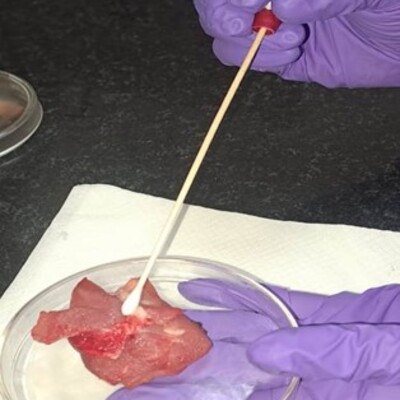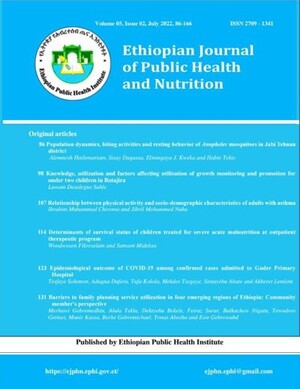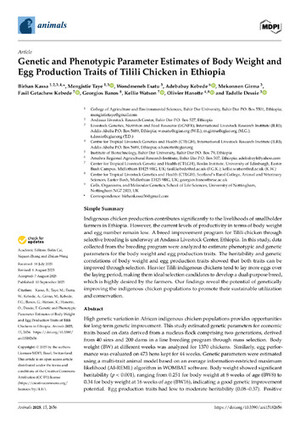
From breeding to genetic solutions strategy—how a livestock genetics innovation achieves ever-growing impact at scale
The Tropical Poultry Genetic Solutions Strategy (TPGS) is a genetics innovation strategy for identifying and testing high-producing farmer-preferred poultry genotypes and using them at scale to address income, nutrition and empowerment challenges in Africa, Asia and beyond. Designed in 2014, TPGS was developed and delivered through multiple interventions, among which the African Chicken Genetic Gains (ACGG) project is the most significant contributor.
Since the inception of the ACGG project, TPGS has been implemented fully in Ethiopia, Tanzania and Nigeria with the funding from Bill & Melinda Gates Foundation. Having reached its impact milestones much earlier than initially targeted, elements of TPGS started to be used in several other countries in Africa, including Kenya, Ghana and Zimbabwe, from 2020 onwards. The achievements of the TPGS were recognized shortly after by multiple international research-for-development investors, and in 2020 a sister project, the Asian Chicken Genetic Gains (AsCGG), was kicked off, with the investments of the Australian Centre for International Agricultural Research (ACIAR), to enhance the production and productivity of smallholder poultry sectors in Cambodia, Myanmar and Việt Nam. Since 2015 the number of investing and non-investing TPGS partners has increased from 5 to 121.
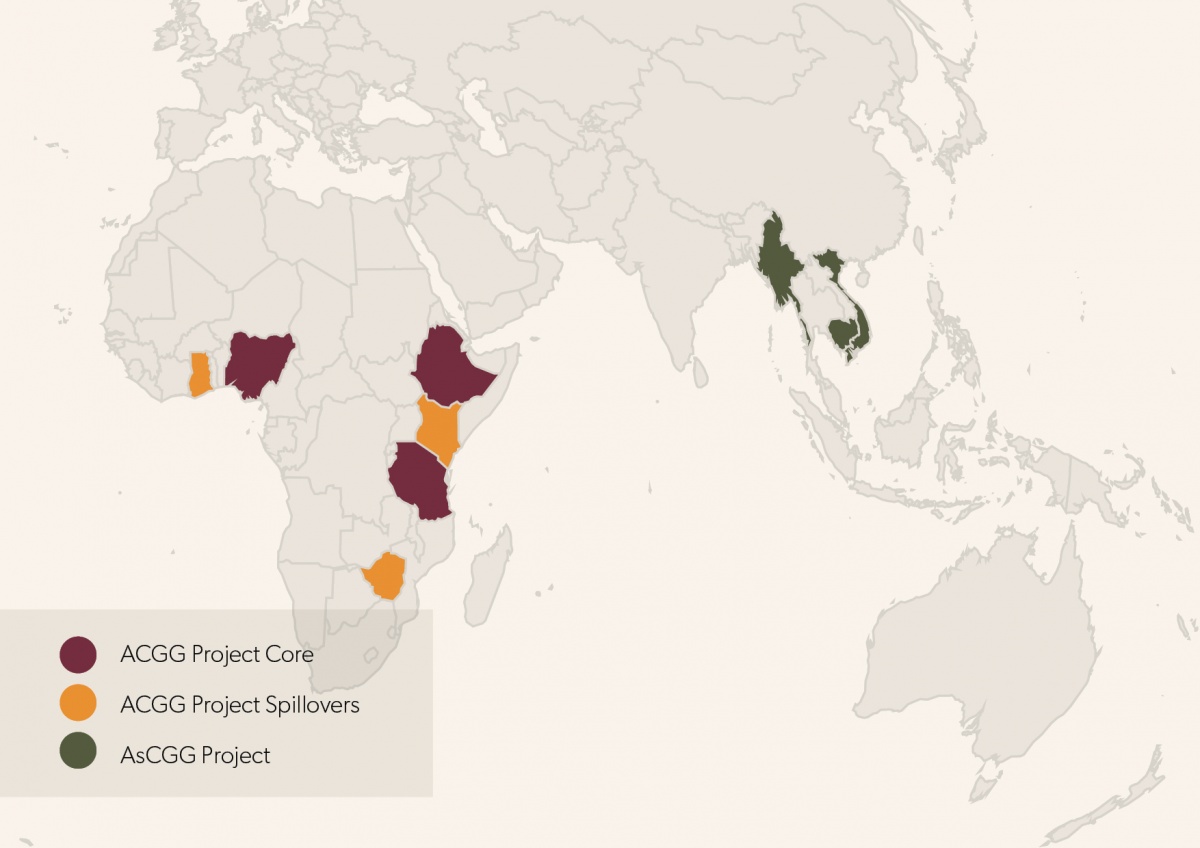
Map of countries the Tropical Poultry Genetic Solutions Strategy (TPGS) is being implemented.
Compared to indigenous breeds, tropically adapted improved chicken breeds identified by TPGS have contributed to a 200% to 300% increase in chicken body weight and 100% to 200% increase in egg production in Ethiopia, Tanzania and Nigeria. Close to a million tropically adapted improved chickens breeds have been distributed to smallholder farmers in Ethiopia, Tanzania and Nigeria helping millions of Ethiopian, Tanzanian and Nigerian farmers and their households improve nutrition and increase incomes.
Scaling Readiness sheds light on the innovations and impact at scale potential of the TPGS Strategy
To systematically capture the learning from the TPGS and leverage it for achieving even higher impact on the poultry sectors in low- and middle-income countries, the International Livestock Research Institute (ILRI) has invested in a facilitated multi-stakeholder process and a deep dive Scaling Readiness study on the TPGS using ILRI’s Impact at Scale Framework. The study scanned more than 500 resources related to poultry genetics ranging from genetics and breeding research to multi-stakeholder innovation platforms focusing on the poultry sector, and used 149 of them to produce the Complete Scaling Readiness Report.
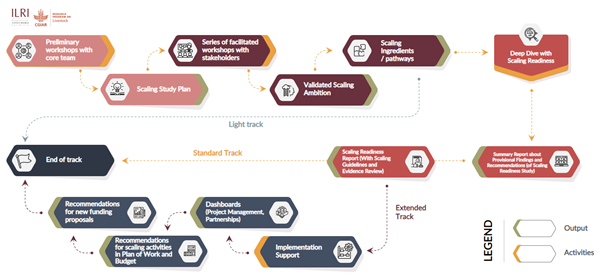
ILRI's Impact at Scale Framework (October 2021).
Genetic gains projects innovate more than genetic solutions
The first activity of Scaling Readiness is characterizing and profiling the novel components of the innovation by consulting with the designers, developers and implementers of the innovations. The Innovation Profile of the Tropical Poultry Genetic Solutions Strategy (TPGS) showed that it has 10 novel components that make it significantly different than existing tropical genetic innovation strategies. Four of the 10 novel components belong to the conventional genetic innovation delivery pipeline; breed genetic profiles, new breeds, testing and validation, and breed distribution. However, the remaining six are not part of the conventional genetics delivery pipeline. For example, using the TPGS, the ACGG project invested significant resources and built a network of partnerships to facilitate importing chicken germplasms, established, or improved national and subnational innovation platforms, prepared multi-access intellectual property protocols, supported public-private-partnership engagements and customization and implementation of a gender strategy. The ACGG teams also co-designed, co-developed (i.e. co-innovated) products, services, models and organizational arrangements to make TPGS viable and impactful in Ethiopia, Tanzania and Nigeria.
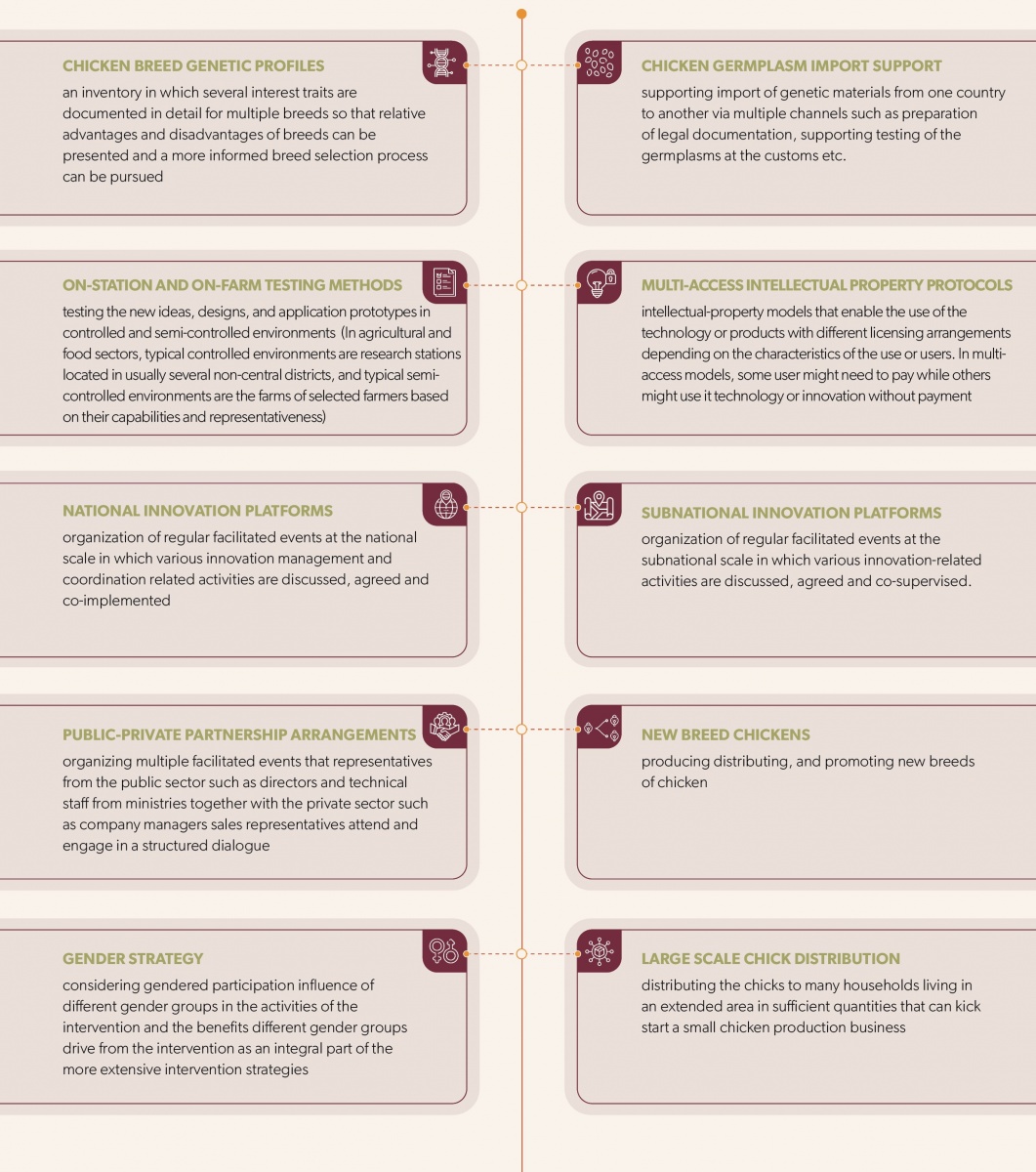
Components of the Tropical Poultry Genetics Solutions Strategy.
Research and innovation in genetic solutions always continue, but the impact can be achieved on the way
Scaling Readiness assesses available evidence such as scientific articles, well-written technical reports, other peer-reviewed publications and communications products to present clear facts on innovations. It measures Innovation Readiness, how good the innovation functions and Innovation Use, who uses the innovation and in which order of magnitude.
The Scaling Readiness assessment of the TPGS innovation (Figure A1) showed that the Average Innovation Readiness (6.4) and Average Use Levels (3.5) of the TPGS are below the maximum score (of 9). This means that there is still room for improving the Readiness and Use of the TPGS. But these scores show a positive impact achieved by the TPGS. A maximum score is not required for achieving impact at scale. Once existing chicken breeds are tested for their contributions in an uncontrolled environment and results indicate improvements (indicated by ‘New Breed Chickens’ being at level 9 on the vertical axis), the genetics solution can start to have a positive impact. This initial positive impact can be leveraged to collaborate with the effective work of other partners to improve other less ready and used components of the genetic solution strategy, creating a positive impact and engagement loop, which was achieved by the ACGG project as indicated by the annual exponential increase of TPGS partnerships.
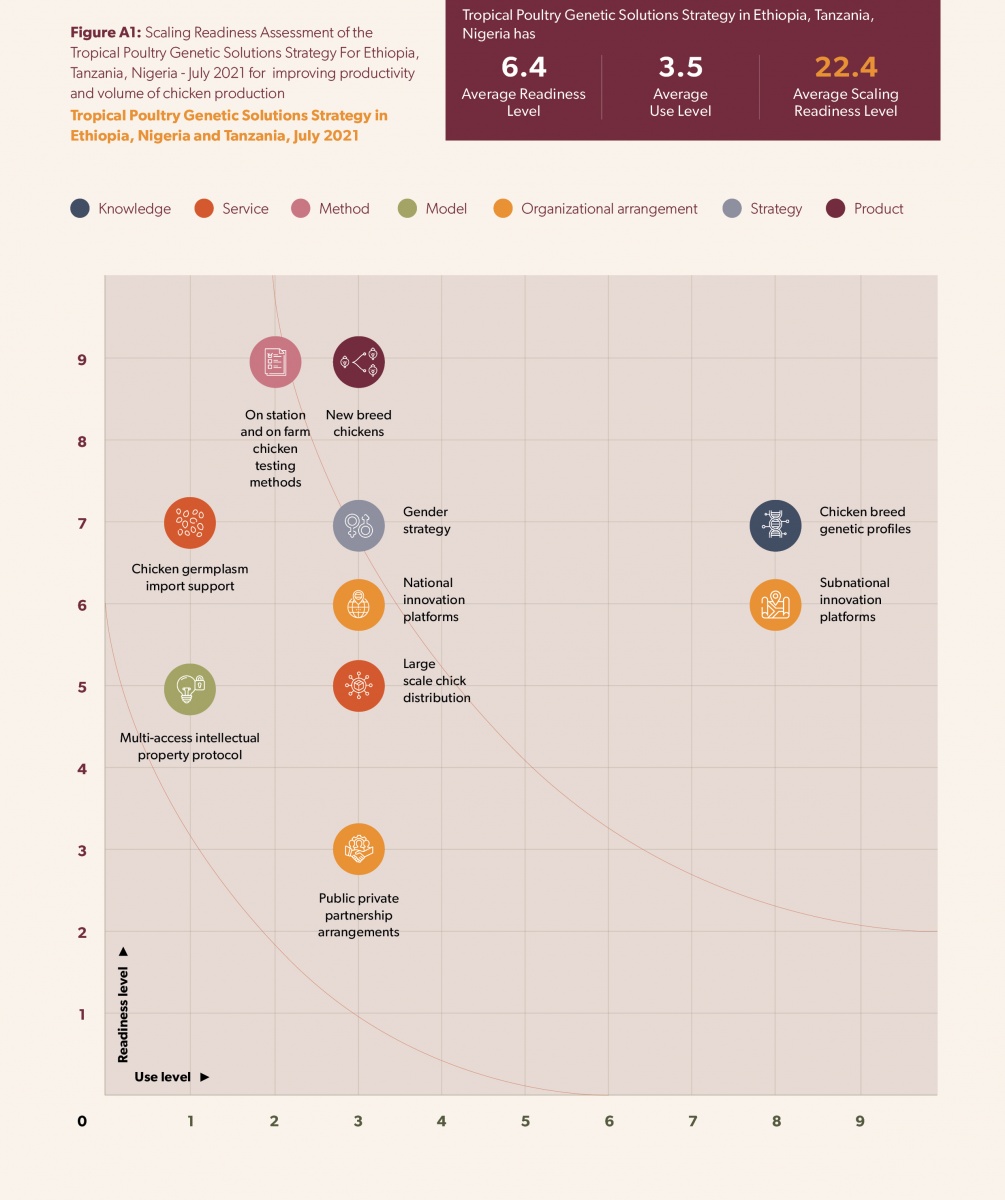
Scaling Readiness Assessment of the Tropical Poultry Genetic Solutions Strategy for Ethiopia, Tanzania and Nigeria for improving productivity and volume of chicken production (July 2021).
Well-functioning genetic innovations do not scale themselves in low- and middle-income country contexts
In addition to characterizing and profiling the innovations and their novel components, Scaling Readiness helps identify other necessary innovations to achieve high impact at scale. It combines the innovations and their complementary innovations customized for the specific low- and middle-income countries’ contexts; and packages them into a coherent innovation package that addresses the awareness, availability, affordability, and multiple other vital challenges for achieving impact at scale.
The innovation package analysis of the TPGS showed that achieving impact at scale in Ethiopia, Tanzania and Nigeria requires complementary innovations to help increase awareness, persuade stakeholders, and increase the accessibility and affordability of chicken breeds. Especially in Nigeria, the effectiveness and efficiency of TPGS can be significantly increased. Personal benefit and video stories (testimonials) of users have been identified as suitable complementary innovations to address the awareness issues. Direct engagements will be crucial to persuade policymakers and large-scale investors. Engagement with large-scale investors will help reduce the investment gaps that will grow as the TPGS is implemented at the national level in the three countries. The two suitable ways to increase the affordability of the TPGS in the three countries, according to the innovation package analysis, are local production of poultry equipment and an import credit instrument that is active during periods of foreign exchange market instability. The analysis also showed that TPGS could be effective if chicken health services and products were sourced locally. Furthermore, the study revealed that TPGS efficiency can be increased by the use of a digital feed application that could optimize the feed cost using locally available ingredients and science-based feed mixes. In summary, increasing the use of genetic innovations at scale requires a tailor-made innovation package that addresses the specific challenges of scaling in low- and middle-income context.
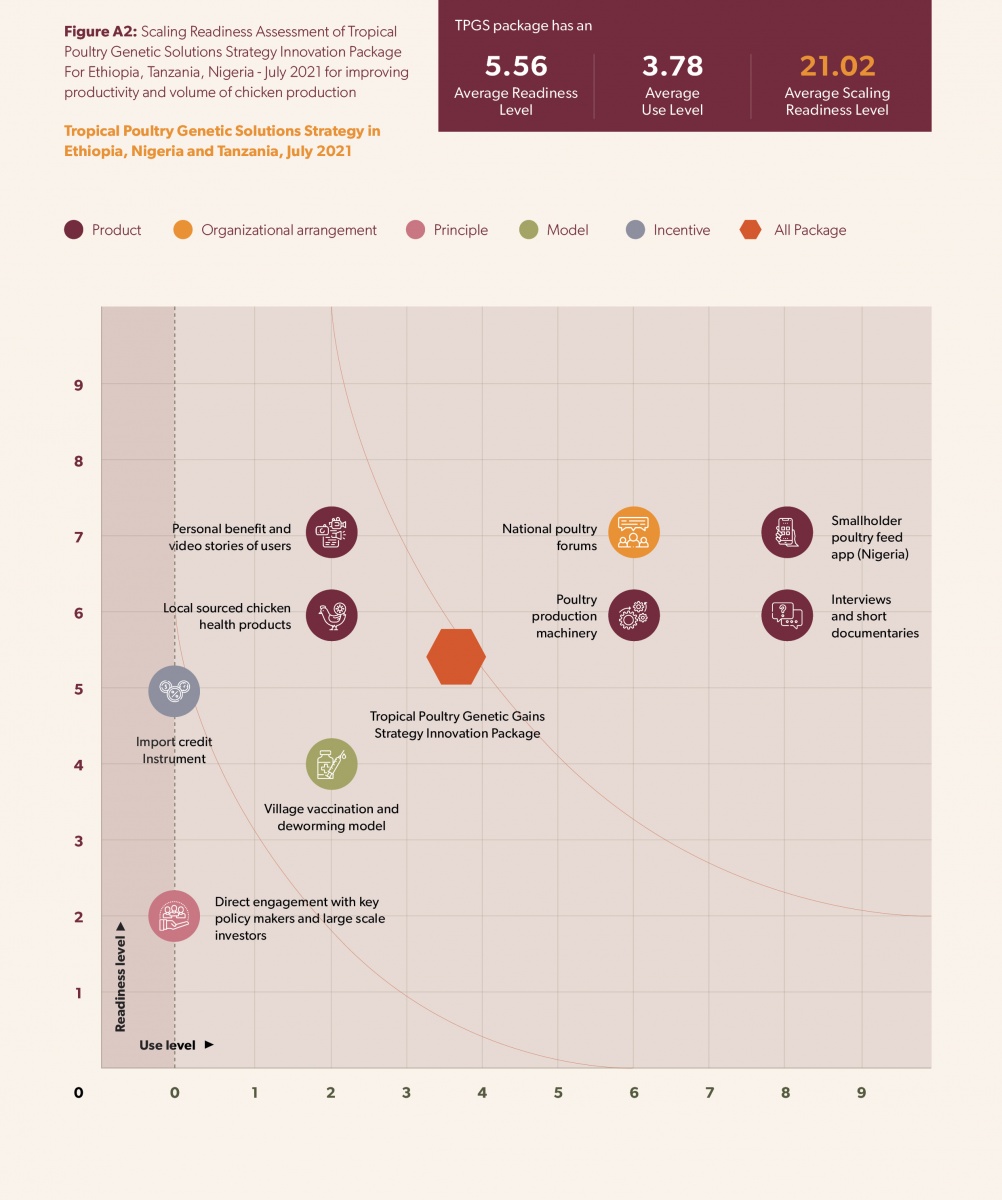
Scaling Readiness Assessment of Tropical Poultry Genetic Solutions Strategy Innovation Package For Ethiopia, Tanzania and Nigeria for improving productivity and volume of chicken production (July 2021).
The next challenges for chicken genetic solutions are intellectual property, imports support capabilities, import credits, and engagement arrangements with key policymakers and large investors
Scaling Readiness also assesses the individual innovations in the innovation packages and present them in a single graph to show a complete picture of their impact at scale potential. The Scaling Readiness Graph answers how well the innovations function (vertical axis) and by whom and in which magnitude they are used (horizontal axis) in a holistic way. Since it shows the relative Readiness and Use Levels, the graph also helps to identify relatively less ready and used innovations or the innovations that need more attention, which are also known as bottleneck innovations.
The assessment indicated that the Readiness and Use levels of the innovations differ (Figure A2). While some of the innovations such as personal testimonials, national forums and the smallholder feed app have already shown to contribute to impact by applied evidence and their early development process completed, others such as import credit instruments and direct engagement with key policymakers and large-scale investors need further development. While some of the innovations are already used by stakeholders who were not involved in any specific research for development interventions, the smallholder poultry feed app and short documentaries are also now being used by stakeholders who were not involved in research-for-development interventions. However, the import credit instrument and direct engagement arrangements with key policymakers and large-scale investors need further use genetic solution interventions.
The Scaling Readiness assessments identified the following bottlenecks among the components of the TPGS and its innovation package, which should be prioritized in further investments for improving productivity and volume of chicken production in the three countries at scale:
- Multiple access intellectual property protocols that encourage large-scale private sector investments while ensuring benefits for small-scale producers. These are protocols that give different access rights to different stakeholders.
- Chicken germplasm import support capabilities (i.e. a team of trained experts with mandate and skills on preparing documents for, and supporting, import processes of private sector enterprises) hosted by national and sub-national government units.
- Import credit instruments that channel international impact investments to private sector enterprises especially during foreign exchange shocks.
- Engagements with key policymakers and large-scale investors to maintain investments during large-scale expansion of the TPGS Strategy.





